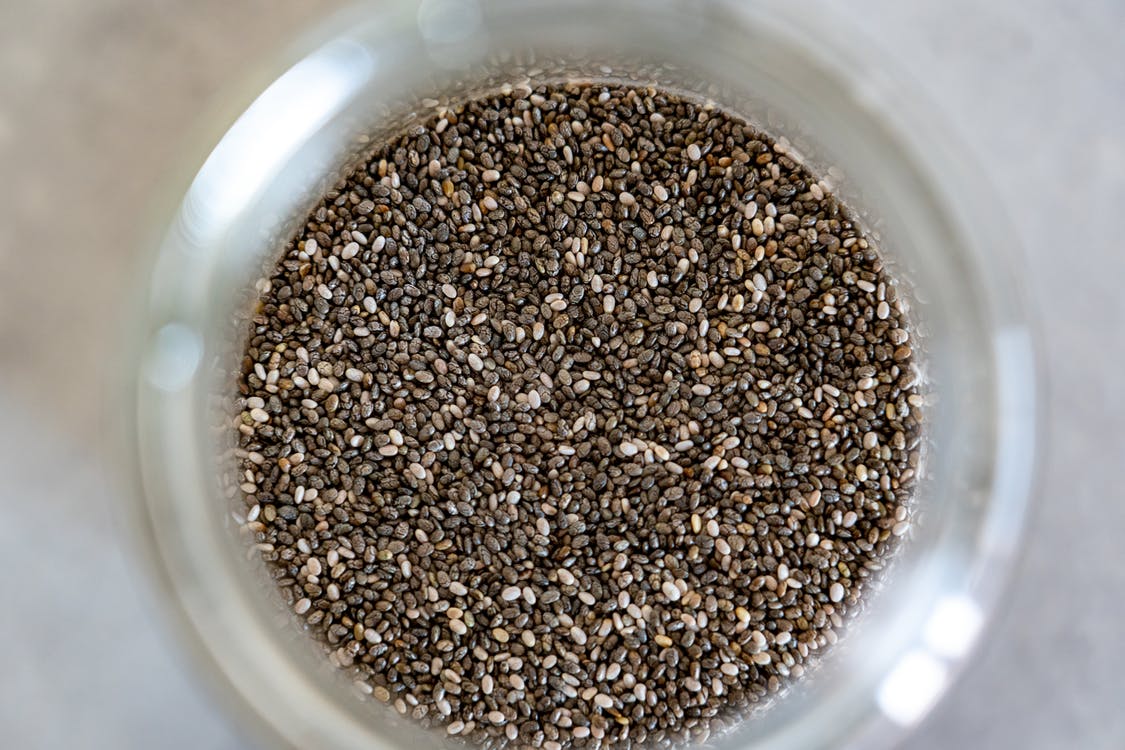HOW AND WHAT SEEDS HELP WEIGHT LOSS?
But how many of us know that even seeds play an important role when it comes to weight loss?
1. Flax Seeds
According to USDA, flax seeds are powered by a high content of fiber (27.3 gm) and protein (18.3 gm). This keeps your stomach satiated whilst promoting healthy digestion.
Flax seeds, also known as linseeds, are the richest sources of plant-based omega-3 fatty acids known as alpha-linolenic acid (ALA).
A study published in the International Journal of Research Studies in Medical and Health Sciences has shown that this essential fatty acid helps in reducing the increased blood glucose level, cholesterol level and even regulating blood pressure.
Flax seeds help in reducing belly fat by increasing thermogenesis (a process in which fat is burnt). It perfectly balances the hormones which contribute to weight loss.
The fiber in flaxseed promotes healthy bowel function and maintains colon health.
How to eat it?
Ground flaxseeds are healthier than whole flaxseeds, as whole seeds are more likely to pass through your intestinal tract without getting absorbed. Grind the flax seeds and sprinkle in salads, soups, buttermilk, various kinds of rice, etc. Drink plenty of water after taking the flax seed powder.
How much to eat?
One tablespoon of whole flaxseed contains as much fiber as half a cup of cooked oat bran. Consume 1 tablespoon of grounded flaxseed two to three times a day.
2. Quinoa seeds
Quinoa is often mistaken as whole grains because of its nutritional values. These seeds can be considered as one of the healthiest foods in the world.
In context to the nutrient content, the profile is very much similar and in fact superior to normally used staple crops. The protein content is 14.12 gm which is higher as compared to rice, barley, wheat, and sorghum.
Similarly, fiber content is also 7.0 gram which is higher than rice and sorghum.
Also, it is loaded with bioactive compounds like polyphenols and isoflavones which keep an eye on vascular contraction and thus, prevent cardiac and blood pressure-related disorders.
It is naturally gluten-free and low in glycaemic index making it a good contender among the healthy seeds for weight loss.
How to eat it?
The Quinoa can be prepared and served in a similar way as rice and can be eaten as upma, can be substituted for rice in variety, can be used as stuffing in rolls, can be eaten like burgers, etc.
How much to eat?
Eat one cup of cooked quinoa in a day for weight loss.
3. Pumpkin Seeds
Pumpkin seeds are an excellent source of zinc that triggers healthy metabolism and muscle building. It also regulates the sugar level in the bloodstream. The rich protein content in the seed enables a healthy digestive tract, avoiding constipation.
Importantly, it promotes alkalinity by neutralizing acidity. Moreover, the magnesium and calcium nutrients can slow down stomach bloating.
How to eat it?
Roast the pumpkin seeds and they can be served as healthy snacks.
How much to eat?
Eat 1 to 2 tablespoons of pumpkin seeds a day for healthy weight loss.
4. Chia Seeds
While seeds are healthy, chia seeds are in a different league altogether. It’s packed with omega 3 fatty acids, iron, magnesium, and potassium among a lot of other micronutrients.
According to Harvard School of Public Health, two tablespoons of chia seeds contains 11 grams of fiber, 4 gram of protein, 7 grams of unsaturated fats and high calcium content to meet 18% of RDA [3].
Also, it is a very rich source of phytonutrients like caffeic acid, quercetin, and chlorogenic acid which exhibit strong antioxidant, anti-inflammatory, antihypertensive and antihyperlipidemic properties.
The rich fiber content of chia seeds helps to absorb water in large quantities. This forms a gel-like substance that makes you feel fuller for longer. Therefore, this prevents blood sugar spikes after a meal and regulates blood glucose levels. Chia seeds will also boost the energy level.
How to eat it?
Whole seeds should be soaked in water overnight before consuming.
How much to eat?
For adults, 15-20 grams of Chia seeds is advisable, whereas children between 10 to 18 years can have 10 grams of chia seeds per day.
5. Sesame Seeds
The Sesame seeds are mostly used as toppings and dressings for meals. It has 5 main nutrients: fiber, zinc, magnesium, calcium, and vitamin E.
The fiber along with minerals in sesame seeds aids strong metabolism. And that’s not all, its wonderful taste and aroma can redefine any dish.
How to eat it?
You can sprinkle these nutrient-rich seeds liberally over your cereals, rice, noodles, or any other dishes at mealtime. You could even mix them with your yogurt or smoothie for a rich nutty flavor.
How much to eat?
You can consume 15 to 25 grams of sesame seeds per day.
6.Hemp Seeds
The Hemp seeds are stress busters and being happy is healthy! These are great providers of omega 3, which is perfect for burning your body fat.
Also, hemp seeds are a rich source of protein (9.46 grams per tablespoon) with all 9 essential amino acids.
Hemp seeds also contain linoleic acid and alpha-linolenic acid as omega-6 and omega-3 PUFA in the ratio of 3:1, which is considered nutritionally ideal .
Iron and magnesium help to get rid of the waistline. Hemp also contains antioxidants like beta-Sitosterol and tocopherols, thereby, controlling inflammation.
How to eat it?
Hemp seeds can be consumed as a whole by lightly toasting them (remember not to roast them) and adding them to smoothies and salads. However, it can also be eaten as a snack.
How much to eat?
Including 4 tablespoons of hemp seeds in the breakfast will help curb excess hunger the entire day.

